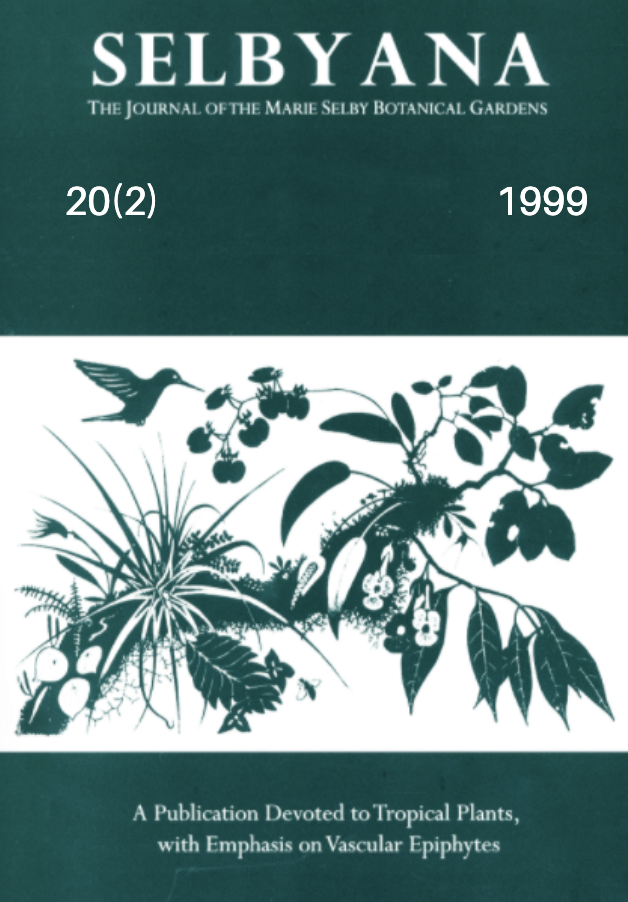Abstract
From a database containing 1377 collections of Bolivian Araceae, representing more than 80% of all collections of the family gathered in the country, we compiled an updated list enumerating 23 native genera with 114 described species and nine infraspecific taxa, and three cultivated genera with one species each. We are aware of at least 60 additional distinct species to which we were unable to assign names, many of them probably representing undescribed taxa. We estimate that the total number of Araceae occurring in the country exceeds 300 species. The first Bolivian collections date from 1830, but 92% of all collections have been made since 1978. Only five of 112 collectors have obtained 58% of the Bolivian Araceae collections. Geographically, only a few easily accessible areas have been sampled intensively (but not at all completely), while most of the country, particularly the Amazonian portion and parts of the humid Andean slopes, remains very poorly known. Clearly, much work needs to be conducted on Bolivian Araceae, particularly involving intensive surveys of specific sites and the cultivation of little-known taxa. De una base de datos que contiene 1377 colecciones de Araceae bolivianas, representando más de 80% de todas las colecciones de la familia hechas en el país, compilamos una lista conteniendo 23 géneros nativos con 114 especies descritas y nueve taxones infraspecificos, así como tres géneros cultivados con una especie cada uno. Conocemos por lo menos 60 especies adicionales a las cuáles no pudimos asignar nombres, en muchos casos probablemente representando especies no descritas. Estimamos que el número total de Araceae en el país excede 300 especies. Las primeras colecciones bolivianas datan de 1830, pero un 92% de todas las colectas han sido hechas a partir de 1978. Cinco de 112 colectores han obtenido 58% de las colectas bolivianas de Araceae. Geographicamente, solamente regiones fácilmente accesibles han sido colectadas intensivamente (pero aún allí no completamente), mientras que la mayor parte del país, particularmente la Amazonia y partes de la vertiente andina húmeda, permanecen muy poco conocidas. Se necesita estudios adicionales de Araceae bolivianas, sobre todo inventarios intensivos de lugares específicos y el cultivo de especies poco conocidas.
Open Access and Copyright Notice
Selbyana is committed to real and immediate open access for academic work. All of Selbyana's articles and reviews are free to access immediately upon publication. There are no author charges (APCs) prior to publication, and no charges for readers to download articles and reviews for their own scholarly use. To facilitate this, Selbyana depends on the financial backing of the Marie Selby Botanical Gardens, the hard work and dedication of its editorial team and advisory board, and the continuing support of its network of peer reviewers and partner institutions.
Authors are free to choose which open license they would like to use for their work. Our default license is the Creative Commons Attribution-NonCommercial 4.0 (CC BY-NC 4.0). While Selbyana’s articles can be copied by anyone for noncommercial purposes if proper credit is given, all materials are published under an open-access license with authors retaining full and permanent ownership of their work. The author grants Selbyana a perpetual, non-exclusive right to publish the work and to include it in other aggregations and indexes to achieve broader impact and visibility.
Authors are responsible for and required to ascertain that they are in possession of image rights for any and all photographs, illustrations, and figures included in their work or to obtain publication or reproduction rights from the rights holders. Contents of the journal will be registered with the Directory of Open Access Journals and similar repositories. Authors are encouraged to store their work elsewhere, for instance in institutional repositories or personal websites, including commercial sites such as academia.edu, to increase circulation (see The Effects of Open Access).
